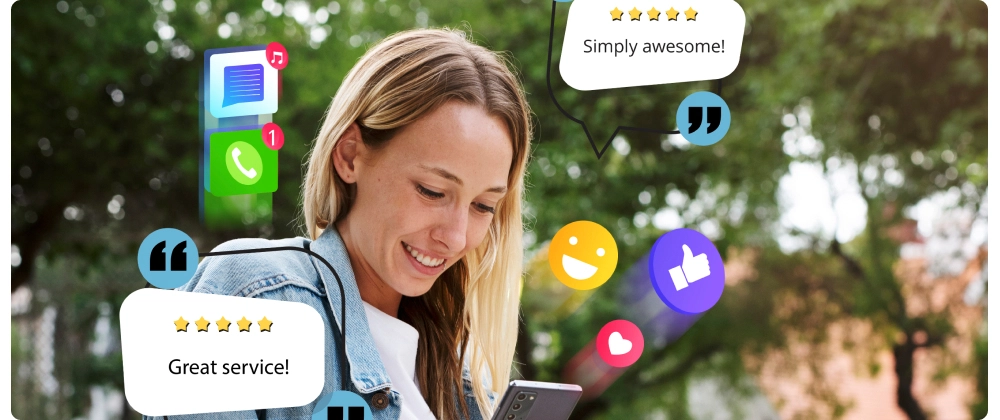So, you built something.
The code is live. The deploy worked. The product exists. 🎉
And now… silence.
No users. No feedback. No sales.
Welcome to the indie dev dilemma: getting people to care is the hardest part.
This post is for developers who already built something and now want to get real users. Whether you're bootstrapping with sweat or have a little cash to invest, this guide is for you.
🧠 Step 1: Shift the Mindset
The first mental hurdle: shipping is not the finish line — it's the starting point.
If you're waiting for users to magically appear because the product is cool, you're gonna be waiting a long time.
You need to market. But that doesn’t mean ads, funnels, and cringe tactics. It means talking to people, showing up, and making your product easy to discover and try.
🛠️ No Budget? Start With Hustle-Based Growth
1. Go Where Your Users Hang Out
If your product helps freelancers, go to freelance subs or Discords.
Built something for Notion nerds? Join Notion Facebook groups or Slack communities.
✅ Be useful. Answer questions. Drop your product when it fits, not as spam.
2. Leverage Organic Platforms
- Product Hunt – Great for launch visibility. Do it mid-week.
- Hacker News (Show HN) – Brutal crowd, but amazing if your tool is dev-focused.
- Reddit – Post in the right subreddits with context and transparency.
- Twitter/X – Build in public. Share progress, wins, bugs, milestones.
- Dev.to / Indie Hackers – Tell your story. People love seeing what you're building.
3. Make Trying the Product Effortless
Ask yourself:
- Can someone try this without signing up?
- Is there a demo?
- Does the landing page clearly explain the value?
Lowering friction increases conversions. Every click you remove is a step closer to a user.
4. Start Small, Talk Big
Every user counts early on. Treat them like VIPs. DM them. Ask questions. Iterate based on what they say.
💸 Got Some Budget? Here's How to Use It Wisely
If you've got $100–$1,000 to spend, here’s where it can go a long way.
1. Reddit Ads ($50–$500)
Target specific subreddits where your users hang out. Works well for niche products, dev tools, or anything hobby-specific.
2. Sponsor a Niche Newsletter ($100–$1000)
Find creators or newsletters in your space and sponsor a slot. It’s personal and way more trusted than generic ads.
3. Twitter/X Post Boosts
Boost tweets that already performed well. Focus on value, storytelling, or a quick product demo (GIFs work great).
4. Hire a Designer or Launch Consultant for Product Hunt
A clean PH page = better chance of trending. Spend on a designer or launch helper instead of fake upvotes (which don't work).
5. SEO Content (Hire a Writer)
Pay a freelancer or AI-assisted writer to publish a few blog posts targeting search terms your audience uses.
Example:
If you built a Pomodoro app → “Best Pomodoro techniques for remote devs”
6. Google Ads for High-Intent Keywords
Only if people are searching for your solution already.
Example:
Your app solves email overload? Try keywords like “how to stop getting too many emails”
7. Micro-Influencer Collabs
Reach out to small creators on YouTube, TikTok, or Twitter with <50K followers. Ask if they want to try your product and share feedback. Many will promo it for <$300.
8. Run a Giveaway
Offer a lifetime license or free year of your product in exchange for shares or signups.
9. Retargeting Ads
Use Google or Meta to show ads only to people who visited your site but didn’t convert. Super cheap and effective if your traffic is growing.
10. Hire a Part-Time Growth Hacker ($500–$1500/month)
If you’re making money or want to move faster, bring on someone who knows how to do email campaigns, user onboarding, and growth experiments.
📚 Bonus: Books for Devs Who Want to Think Like Founders
Creative Tim has an amazing resource: a full collection of 6 books for indie hackers, devs, and digital product builders. These aren’t fluffy theory — they’re full of frameworks, templates, and action plans.
Here’s the breakdown:
How to Set Up Your Business - For devs ready to go from “I built a thing” to “I’m building a business.”
How to Develop Your eCommerce Business - Perfect if you’re selling a digital or physical product. Covers Shopify, Etsy, Amazon, and beyond.
How to Launch Your Product - A launch playbook built for developers. Funnels, pricing strategies, checklists — all in one place.
How to Promote Your Product - Turn marketing from a mystery into a system. Learn SEO, PPC, and social strategies that actually work.
How to Grow Your Business - Once you’ve got traction, this one helps you scale it — without going crazy.
How to Use AI for Your Business - Use AI to work smarter, market faster, and even generate content or customer support.
TL;DR: If you're building something cool and want to actually make money from it, these books will help you level up fast.
👉 Explore the full book series here
⚠️ Before You Spend Anything
- Install basic analytics (Plausible, PostHog, etc)
- Set a goal: Signups? Emails? Trials?
- Don’t expect overnight ROI — every campaign is data and learning
🏁 Wrapping Up
Getting your first 100 users is hard — even with a great product.
But it’s totally doable with a mix of hustle, clarity, and smart spending.
Start small. Talk to people. Learn fast. Iterate faster.
Once you hit 100 users, things start compounding.
Until then, it’s just you, showing up every day, putting the product in front of real humans.
Got a product you want feedback on? Drop it in the comments — let’s get you unstuck. 💬🚀




Top comments (1)
Thank you! 🙏🏻